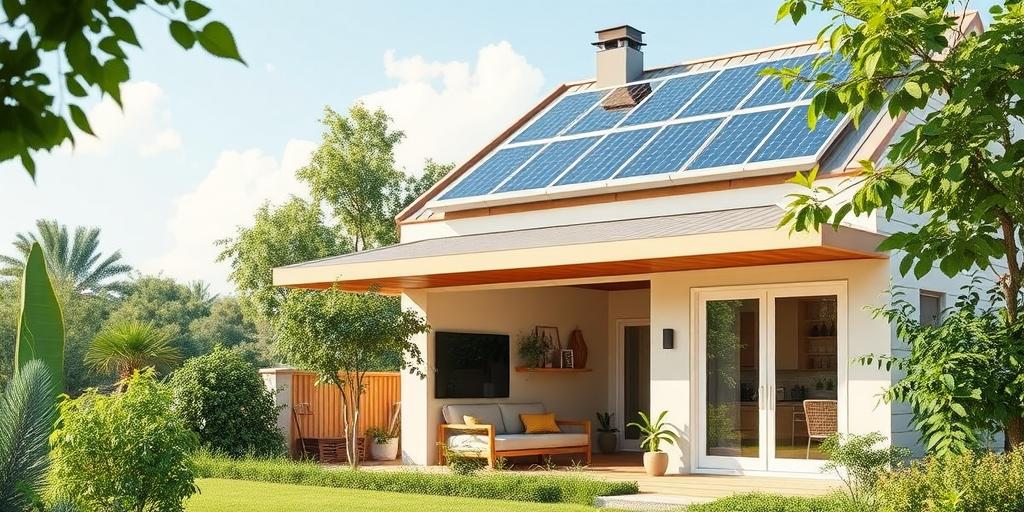Sustainable Living Practices for the Everyday Home in 2025
As we approach 2025, the urgency of sustainable living has never been more pronounced. Integrating eco-friendly practices into our homes is not just a trend but a necessity. This article outlines practical steps for adopting sustainable living practices in your everyday home.
1. Energy Efficiency
Reducing energy consumption is a cornerstone of sustainable living. Here’s how to enhance energy efficiency at home:
- Smart Home Technology: Install smart thermostats and lighting systems to optimize energy use. These devices learn your habits and adjust settings automatically.
- Energy-Efficient Appliances: Upgrade to appliances with Energy Star ratings. These use significantly less energy and water than older models.
- Renewable Energy Sources: Consider installing solar panels. By 2025, solar energy systems are more accessible and cost-effective, making them a viable option for many homeowners.
- Insulation: Ensure your home is properly insulated to reduce heating and cooling needs. Check for drafts around windows and doors.
2. Water Conservation
Water is a precious resource, and conserving it is crucial for sustainability:
- Low-Flow Fixtures: Install low-flow showerheads, faucets, and toilets. These fixtures reduce water usage without compromising performance.
- Rainwater Harvesting: Collect rainwater for gardening and other non-potable uses. Rain barrels are an easy and effective way to implement this.
- Efficient Landscaping: Choose native plants that require less water and maintenance. Xeriscaping, a landscaping method that minimizes water use, is also a great option.
- Fix Leaks: Regularly check for and repair any leaks in your plumbing system. Even small leaks can waste significant amounts of water over time.
3. Waste Reduction and Recycling
Minimizing waste is essential for reducing environmental impact:
- Comprehensive Recycling Program: Set up a system for separating recyclables, including paper, plastic, glass, and metal. Ensure everyone in the household knows how to use it properly.
- Composting: Start a compost bin for food scraps and yard waste. Composting reduces landfill waste and creates nutrient-rich soil for your garden.
- Reduce Single-Use Plastics: Avoid single-use plastics by using reusable bags, water bottles, and food containers. Support businesses that offer sustainable packaging options.
- Buy in Bulk: Purchase food and household items in bulk to reduce packaging waste. Use reusable containers to store these items.
4. Sustainable Materials and Furnishings
The materials used in your home can have a significant impact on the environment:
- Eco-Friendly Building Materials: When renovating or building, opt for sustainable materials such as bamboo, reclaimed wood, and recycled content products.
- Non-Toxic Paints and Finishes: Use paints, stains, and finishes that are low in volatile organic compounds (VOCs). These reduce indoor air pollution and are better for your health.
- Sustainable Furnishings: Choose furniture made from sustainable materials, such as sustainably harvested wood or recycled materials. Look for certifications like FSC (Forest Stewardship Council).
- Upcycle and Repurpose: Give old items new life by upcycling and repurposing them. This reduces waste and adds a unique touch to your home décor.
5. Smart Consumption Habits
Being mindful of our consumption habits can greatly contribute to sustainability:
- Buy Local and Seasonal: Support local farmers and businesses by buying locally sourced and seasonal products. This reduces transportation emissions and supports the local economy.
- Reduce Meat Consumption: Consider reducing your meat consumption, as meat production has a significant environmental impact. Explore plant-based alternatives.
- Sustainable Cleaning Products: Use eco-friendly cleaning products that are biodegradable and free from harsh chemicals. Many DIY recipes are available online.
- Mindful Shopping: Before making a purchase, consider whether you truly need the item. Choose products that are durable, repairable, and have minimal environmental impact.
Conclusion
Adopting sustainable living practices in your home by 2025 is not just an ethical choice but a practical one. By focusing on energy efficiency, water conservation, waste reduction, sustainable materials, and smart consumption habits, you can create a healthier, more environmentally friendly home. Every small step contributes to a larger positive impact on the planet. Embrace these changes and be a part of the movement towards a sustainable future.
